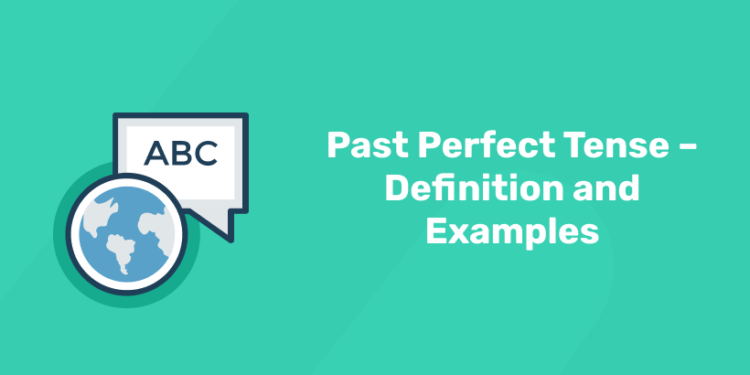Table of Contents
If you put in the effort to comprehend it and employ it in the appropriate manner, the present perfect tense may be really straightforward and uncomplicated. Despite the fact that the structure of the tense is quite straightforward, it gives the impression to some people that it is complicated. The present perfect tense is something that can be learned, and as such, the purpose of this essay is to assist you in the process of learning it. This page will provide you with an explanation of the meaning, definition, formula, structure, and uses of the term, along with some examples that should help you understand it better.
Join our Spoken English program today and communicate with ease!
What Is the Present Perfect Tense?
When used in a sentence, the present perfect tense can be used to describe either an event that took place in the recent past but is still having an influence in the present or an action that symbolizes an unspecified period of time in the past. Let’s take a look at how the tense is defined in a few different dictionaries so that we can get a better grasp on what it means.
Definition of the Present Perfect Tense
The present perfect tense is described as “the form of a verb that describes an activity done in a time period up to the present, created in English with the present tense of ‘have’ and the ‘past participle’ of the verb, as in I have eaten” by the Oxford Learner’s Dictionary. The Cambridge Dictionary describes the present perfect tense as “the form of the verb used for actions or occurrences that have been accomplished or have transpired in a span of time up to now.” This definition can be found in the section titled “The Present Perfect Tense.”
The Collins Dictionary provides a much more in-depth explanation, stating that “the present perfect tenses of a verb are the ones used to talk about things that happened before the time you are speaking or writing but are relevant to the present situation, or things that began in the past and are still happening.” This is a much more detailed explanation than the one provided by the Oxford English Dictionary. The Merriam-Webster Dictionary provides the following definition for the present perfect tense: “relating to, or constituting a verb tense that is traditionally formed in English with have and a past participle and that expresses an action or state begun in the past and completed at the time of speaking (as in “I have finished”) or continuing in the present (as in “We have lived here for several years”)”
Elevate your speaking skills with our Spoken English Course!
Structure and Formula of the Present Perfect Tense
1: Which of the sentences below is grammatically correct?
The general formula of the present perfect tense is as described below:
The structure of the present perfect tense can be broken down and analyzed with reference to many sorts of sentences, including those that are positive, negative, interrogative, and negative interrogative. For more information regarding the topic at hand, please refer to the table that can be found further down on this page.
| Structure of the Present Perfect Tense | |||
| Positive | Negative | Interrogative | Negative Interrogative |
| Subject + have/has + past participle + the rest of the sentence | Subject + have/has + not + past participle + the rest of the sentence | Have/has + subject + past participle + the rest of the sentence | Have/has + subject + not + past participle + the rest of the sentence
(or) Haven’t / hasn’t + subject + past participle + the rest of the sentence |
Examples:
|
Examples:
|
Examples:
|
Examples:
|
Learn Spoken English with Aparna Mulberry! Enroll Here!
Spoken English Course for Guaranteed Confidence and Career Growth
Spoken English Course by Entri App: Enhance your communication skills, gain certification, and boost your career with confidence.
Join Now!Rules to be Followed When Using the Present Perfect Tense
Before you can begin to use the present perfect tense, the very first thing you are going to need to become familiar with is the construction of past participles. In most instances, the basic form of the verb is modified by the addition of the letter ‘ed’ to produce the past participle in the English language. There are, however, a number of irregular verbs that do not follow the concept of adding ‘ed’ to the base form as regular verbs do. These verbs have different spellings and do not follow the concept of adding ‘ed’ to the base form in any way. You can examine how these verbs are expressed in their past participle form by looking at the extensive list of irregular verbs that are provided.
The following thing to keep in mind is that a sentence containing the past perfect form of the verb uses two verbs – a helping verb and a main verb – to express the meaning of the sentence. Have and has are the two helping verbs that are utilized in this situation. When referring to the subject of a sentence with the pronouns “I,” “you,” or “they” or with plural nouns, the word “have” is appropriate to use. When referring to a subject that is “he,” “she,” “it,” or a singular noun, the word “has” is appropriate to use.
Uses of the Present Perfect Tense
The use of the present perfect tense is possible.
- to indicate a process or occurrence that took place or got underway in the past but which continues to have some influence or connection on the topic at hand in the present day.
- to point out something that took place in the past but is still happening in the present day.
- The act of establishing a connection between the happenings of the present and those of the past.
Start speaking English like a native with our comprehensive course.
Examples of the Present Perfect Tense
Learn how to use the present perfect tense effectively by going through the examples given below.
| Examples of Present Perfect Tense | |
| Pronouns / Nouns | Examples |
| I | I have worked as a teacher for two years. |
| You | You have worked as a teacher for two years. |
| We | We have worked as teachers for two years. |
| He | He has worked as a teacher for two years. |
| She | She has worked as a teacher for two years. |
| They | They have worked as teachers for two years. |
| It | It has been here the whole time. |
| Singular noun | Michael has worked as a teacher for two years. |
| Plural noun | Devika and Priscilla have worked as teachers for two years. |
Spoken English Course for Guaranteed Confidence and Career Growth
Spoken English Course by Entri App: Enhance your communication skills, gain certification, and boost your career with confidence.
Join Now!Frequently Asked Questions on the Present Perfect Tense
What is the present perfect tense?
When used in a sentence, the present perfect tense can be used to describe either an event that took place in the recent past but is still having an influence in the present or an action that symbolizes an unspecified period of time in the past.
What is the definition of the present perfect tense?
The present perfect tense is described as “the form of a verb that describes an activity done in a time period up to the present, created in English with the present tense of ‘have’ and the ‘past participle’ of the verb, as in I have eaten” by the Oxford Learner’s Dictionary. The Cambridge Dictionary describes the present perfect tense as “the form of the verb used for actions or occurrences that have been accomplished or have transpired in a span of time up to now.” This definition can be found in the section titled “The Present Perfect Tense.”
What is the formula of the present perfect tense?
The basic structure of the present perfect tense is as follows:
Subject + have/has + previous participle + remainder of sentence
What are the rules to be followed when using the present perfect tense?
When utilizing the present perfect tense, you must remember that it contains two verbs: an assisting verb and a major verb. Have and hath are the two auxiliary verbs that are employed. Following this is the past participle form of the primary verb.
What are the uses of the present perfect tense?
The present perfect tense is appropriate.
- To indicate an activity or occurrence that occurred or began in the past and continues to have repercussions or relevance in the present.
- To show that an action occurred in the past and is now occurring in the present.
- To establish a connection between current and historical events.
Join our Spoken English program today and communicate with ease!










